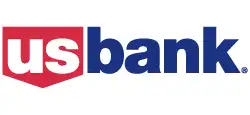Many personal lines of credit have a life cycle with two stages: the draw period and the repayment period. These stages usually last three to five years each.
- Draw period: Think of your draw period as your borrowing period. Here, you’ll use a specific card or checkbook to draw from your line of credit. During this time, you’ll also make minimum monthly payments.
- Repayment period: When you hit your repayment period, you will no longer be able to borrow. Instead, this is the time you’ll pay back your outstanding balance.
You can usually borrow between $1,000 and $50,000 with a PLOC. Your lender might also have a minimum draw amount. For example, you might not be able to draw less than $50 at a time.
Instead of the draw/repayment period model, some PLOCs only have a draw period. In these instances, your outstanding balance might be due in full once your draw period is over. Or you might have a continuous draw period, depending on your lender. These PLOCs work like a credit card (you can borrow as long as you make your minimum monthly payments and stay within your credit limit).
Personal line of credit interest rates
On a personal line of credit, you pay interest on what you borrow, and interest accrues immediately. The APR is usually variable, which means it can fluctuate each month. This differs from fixed interest rates, which stay the same for the duration of your loan term.
Variable interest rates are guided by the Wall Street Journal prime rate.
The Wall Street Journal prime rate (also called the U.S. prime rate) is the average interest rate that most lenders charge their most creditworthy customers. This rate tends to fluctuate based on the Federal Reserve rate, but not always.
To illustrate this, let’s say you see a PLOC with a starting APR of prime plus 5.00%. Also imagine that the prime rate is 8.50%. That means borrowers with the best credit could get a minimum APR of 13.50%, or 8.50% plus 5.00%.
Personal line of credit fees
Each lender sets its own fees on personal lines of credit. As you read the fine print, keep an eye out for extra charges such as:
- Origination fee: Some lenders tack on this upfront fee to cover credit underwriting and application processing.
- Application fee: Application fees aren’t common, but they are possible. Skip lenders that charge you to apply.
- Late payment fee: Many lenders charge a fee for making late payments. Check to see if the lender has a grace period — some might only consider you late if you are 10 or more days behind.
- Over limit fee: An over limit fee could apply if you borrow past your credit limit.
- Annual or monthly fee: You may need to pay a maintenance fee every year (or month) that your line of credit is open.
- Transaction fee: Sometimes called a draw fee, this means some lenders may charge you to access your line of credit. Keep this in mind when deciding if a personal line of credit is your best option.









